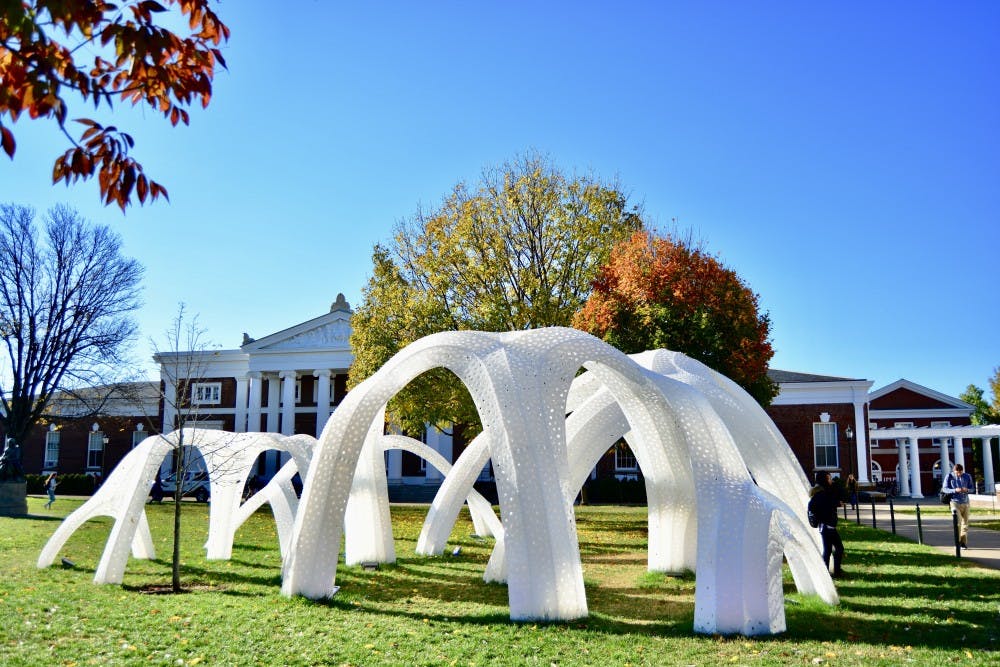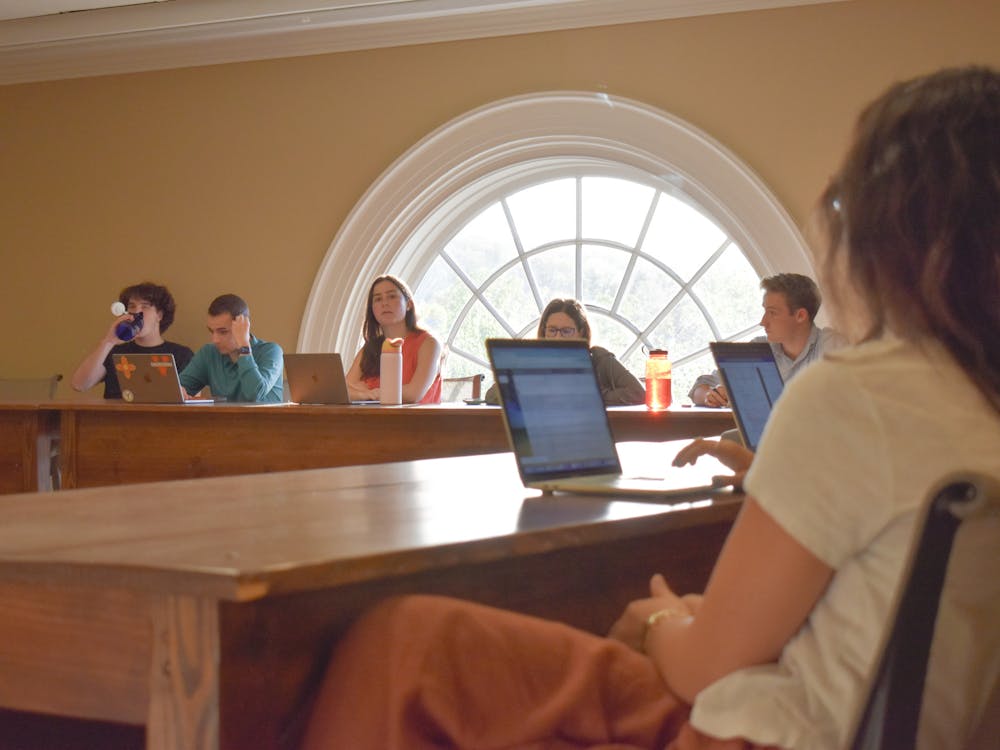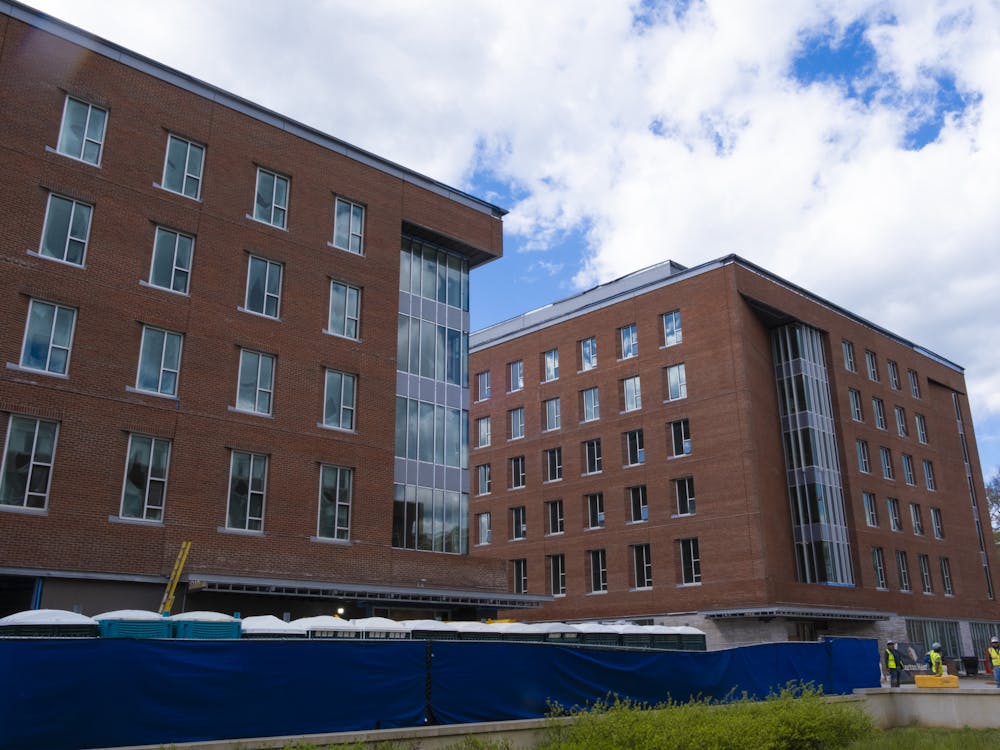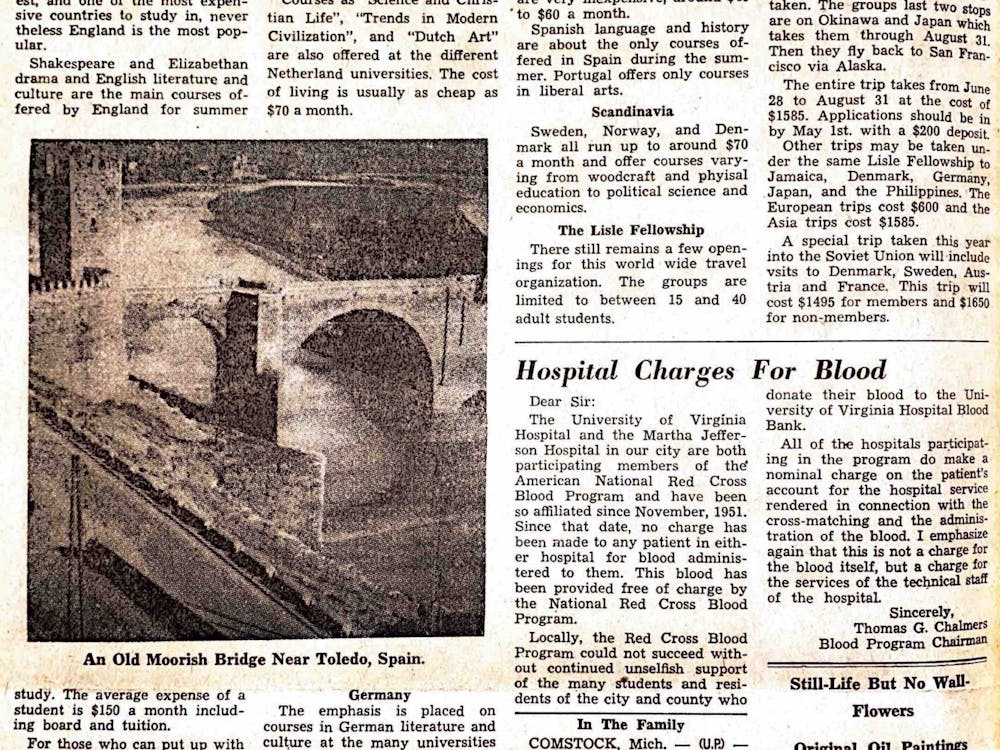A neon column displayed near the Rotunda and the “Lumina Pavilion” sculptures on the Homer Flat will be relocated in the next few weeks. They were placed on Grounds in celebration of the University’s Bicentennial, which launched Oct. 6.
The column near the Rotunda, which is topped with the traditional corinthian order and designed with neon-colored glass, was built by Jim Nemer, an 80-year-old community scholar. The “Lumina Pavilion” sculptures which were placed on the Homer Flat just before the launch weekend were created by a class in the Architecture School.
Nemer’s column was originally crafted in 2012 and placed in front of Ruffin Hall for nine months. During this time, the actual columns of the Rotunda were crumbling and for safety reasons were being covered up.
“The reason I did it was because the capitals on the Rotunda, were falling apart, so they had them shrouded in black,” Nemer said. “So I thought it would be a nice statement to do a capital in neon, which is something I’ve always been fascinated by.”
Mich Levine, the creative director of the Bicentennial event, approached Nemer about incorporating the sculpture into the anniversary celebrations. Although Nember had not intended the column for this purpose, it was always his desire to juxtapose the neon capitals of his sculpture with the marble capitals of the rotunda.
“When I created the original one, my ultimate dream would have been to have it in front of the Rotunda, but I never ever believed that it would make it,” Nemer said. “Low and behold, I got my wish. You know, my dream came true.”
The column has been up since the launch of the Bicentennial weekend nearly three weeks ago, but is going to be relocated later this week. It will be placed on the third floor of Ruffin Hall. While Nemer found the project to be hard work, he said he was pleased with the reception.
“Everyone’s been wonderful,” Nemer said. “I’ve gotten quite a number of emails. It’s been very well received, people seem to like it.”
The “Lumina Pavilion” is a white structure composed of interlocking arches produced by a computer software and algorithm which simulates the physics of catenary curves. The project — which is currently located near the Homer statue just north of Old Cabell Hall — was created by a class in the Architecture School, involving both undergraduates, graduates and two faculty members.
The sculpture was one of the first in a new series run by the Architecture School entitled “Innovators in Practice,” and the class had a visiting designer Andrew Kudless who helped with the project. Michael Tucker, a fourth-year Architecture student, helped in the creation of the sculpture and said he benefited from learning from an expert.
“[Kudless] is a really phenomenal fabrication professor. He uses a program called Grasshopper, which I am obsessed with,” Tucker said. “I got to see a master at a program I am very into. I was able to learn a lot from that.”
Tucker said the class wanted to create a structure that reflected the existing structures of the pavilions on the Lawn, demonstrating where the University has come from, but also taking a more modern outlook.
“In a lot of ways it represents a new pavilion and what is coming and growing from what is already happened in the past 200 years,” Tucker said. “How we’re adapting and changing, but also learning from the past.”
The team had only six weeks to design, create and build the sculpture to have it ready by the time of the Bicentennial launch weekend. It will remain on the South Lawn until Nov. 15. and will then be relocated to the North Terrace at the Architecture school until the end of the semester.
Melissa Goldman, fabrication facilities manager at the Architecture School, helped to oversee the project along with Asst. Architecture Prof. Michael Beaman. Goldman said both at the launch event itself and in the weeks following the reception had been very positive.
“I came back to watch what was happening, and the acrobats were performing in it, which was super amazing,” Goldman said. “But what was super touching was watching our students bring their friends and their parents and families who had come with them to the Bicentennial to see this.”
Goldman said she has been particularly excited about the way children have been interacting with the structure.
“I’ve seen kids running through it, and they just experience it on a different scale, because they get through some of these small holes that we don’t normally run through,” Goldman said. “I think it’s been a really great community space and I want to make more of them.”





